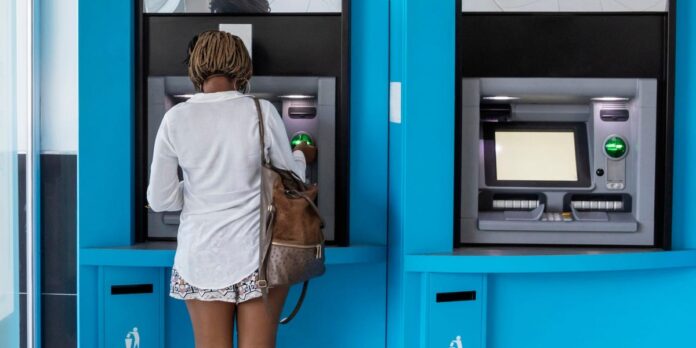Personal Finance Insider writes about products, strategies, and tips to help you make smart decisions with your money. We may receive a small commission from our partners, like American Express, but our reporting and recommendations are always independent and objective.
Do you feel like you don’t have enough money to start investing? If you have a $5 bill in your wallet, you may be holding onto enough to start building your investment portfolio. Before you rush and sign up for an investment account, however, it’s a good idea to look at your finances to decide if you are in a position to start investing.
Here are some guidelines you can follow that will help you make the right choices around saving and investing your hard-earned money.
What is saving vs. investing?
In many ways, saving and investing are very similar. Both involve putting away money for the future. Both involve thoughtfully stashing away cash for your financial needs and goals. But they work differently, so it’s important to prioritize the right way.
Saving, usually in savings accounts, is a way to put money away with an extremely low level of risk and a modest interest rate. In the US, savings accounts are insured by the government for at least $250,000, so even if the bank goes out of business, your money is safe. When your money is in a savings account, you’ll probably earn a modest interest rate while your cash sits in the bank.
Investing is riskier than saving, but not so risky that you shouldn’t do it. Investing typically involves longer-term goals like retirement or paying for your child to go to college. With investments, your account can lose value. However, well-planned investments generally offer far greater returns than savings accounts.
With high-yield savings accounts today, you’re lucky to earn 1% interest. Over a long period of time, the S&P 500 (a common measure of the stock market) has returned about 10% per year. While past returns are no guarantee of the future, you can generally expect better results when investing, though there is always a risk your investments can go down.
Start with your 401(k) at work
The best place to start investing for most people is an employer-sponsored 401(k). Depending on where you work, it could come in the form of a 403(b) or 457 plan, but they all work in essentially the same way for employees.
With this type of account, you can have a portion of your paycheck automatically withheld and invested for retirement with a tax advantage. There is no minimum savings rule to get started here.
Many employers will match your contribution, or a portion of your contribution, up to a certain limit in a 401(k) account. As a general rule, you should always take 100% advantage of this match. It’s like free money on top of your paycheck. Don’t leave those dollars behind.
Setting minimum savings guidelines for other investments
The bare minimum to save before investing depends on your personal finances, income, debt, and monthly bills. Before most people start investing, it’s a good idea to pay off any high-interest debt and save up an emergency fund with at least three months of expenses.
Emergency funds are a way to save for those unpredictable financial emergencies life throws your way. From broken-down cars to surprise injuries or illnesses, bills can add up fast. An emergency fund can also protect you from an income loss due to an unexpected layoff or job loss.
Once you have those bases covered, you’re probably in a good position to start funneling a portion of your income into investments.
Investment strategies when you’re starting small
You don’t need $10,000 to start investing. You don’t even need $100. You can get started with investing for less than $10 at several major brokerages. With fractional shares and commission-free stock and ETF trades, you can often invest with as little as $5.
If you are starting with a small portfolio, it may be a wise strategy to focus on broad index funds with low management fees. S&P 500 ETFs, which mimic the performance of 500 of the biggest stocks in the US, often come with fees of less than 0.10% per year and are supported by fractional investing brokerages.
As you can afford to add more to your portfolio, you can diversify into additional funds and may consider other, more focused investments.
Investing isn’t just for wealthy people
In the old days, working with a stockbroker to buy and sell stocks was prohibitively expensive for many individuals who wanted to invest. These days, a combination of no commissions, support for fractional shares, and the ability to invest with mobile apps has made it so easy and cheap that nearly anyone can invest.
As long as you have your minimum emergency fund stashed away and have high-interest debt like credit cards paid off, you probably have enough saved up to start investing.
Disclosure: This post is brought to you by the Personal Finance Insider team. We occasionally highlight financial products and services that can help you make smarter decisions with your money. We do not give investment advice or encourage you to adopt a certain investment strategy. What you decide to do with your money is up to you. If you take action based on one of our recommendations, we get a small share of the revenue from our commerce partners. This does not influence whether we feature a financial product or service. We operate independently from our advertising sales team.









